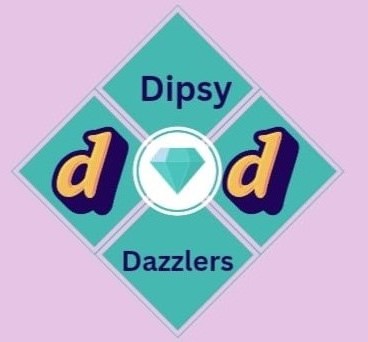
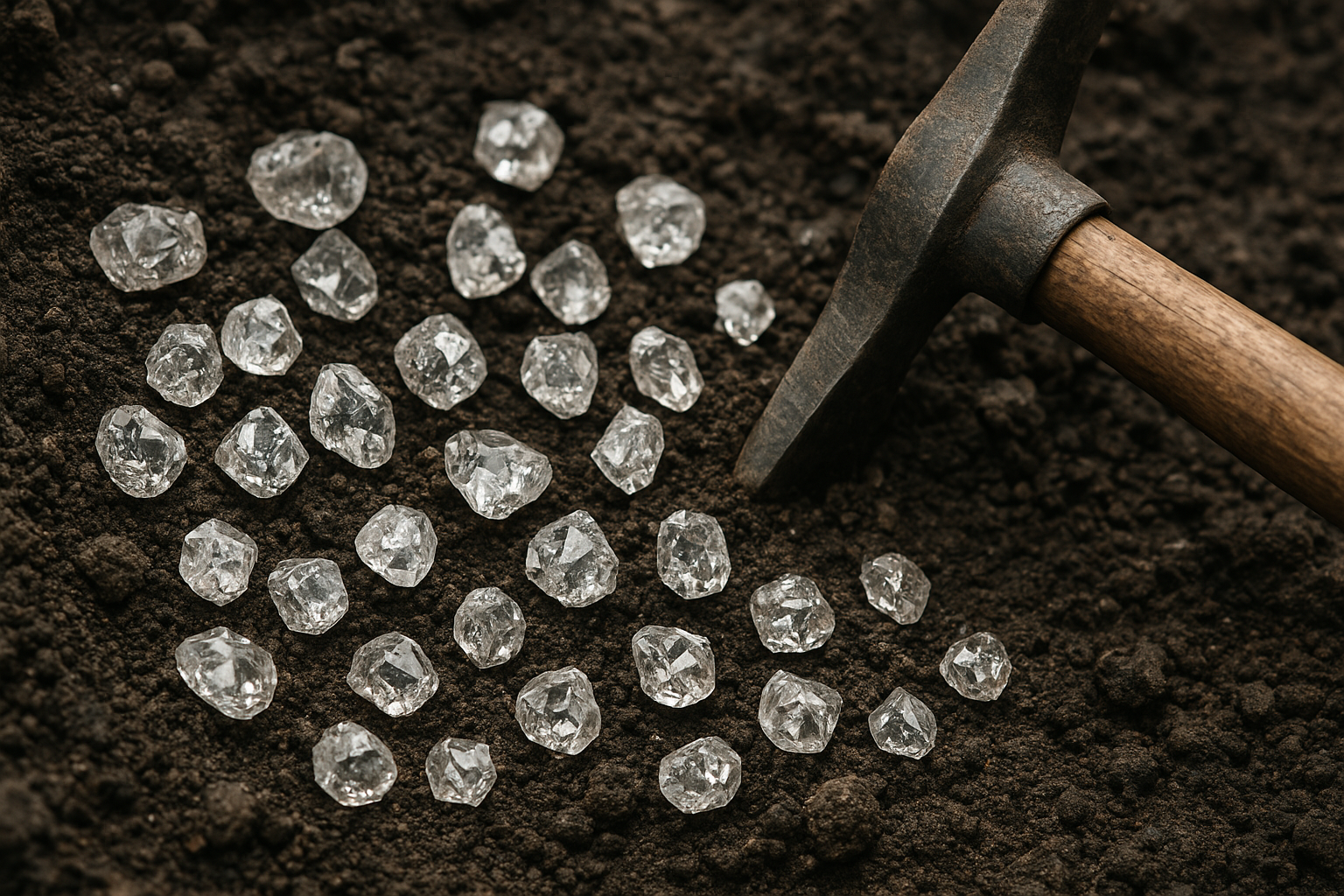
Introduction
“All is beautiful and unceasing, all is music and reason, and all, like diamond, is carbon first, then light.”
Fuelling that unexplained human desire, diamond’s brilliance seen as a mark of eternal love and unmatched strength mixed with rare sophistication; yet its journey from deep inside the earth to a symbol of elevated status is not without controversy, making it as perplexing as it is captivating!
Diamond history: as natural wonder and cultural icons.
The Sparkle of Nature and Culture
Diamonds have captivated human imagination for centuries. More than just beautiful gemstones, diamonds are natural wonders—formed deep beneath the Earth’s surface under immense pressure and heat over billions of years. But beyond the diamond history – their geological allure, diamonds have come to represent power, romance, luxury, and even controversy. From royal crowns to engagement rings and from red carpets to silver screens, diamonds sparkle with symbolism.
Diamonds as Natural Wonders
Diamonds are the hardest naturally occurring substance on Earth, composed entirely of carbon atoms arranged in a perfect cubic crystal structure. This atomic perfection gives diamonds their remarkable durability and dazzling brilliance. Most natural diamonds are formed between 90 and 150 miles beneath the Earth’s crust and are brought to the surface through volcanic eruptions in kimberlite pipes.
The rarity of gem-quality diamonds, combined with their clarity, fire, and strength, makes them one of nature’s most prized treasures. A diamond’s journey—from formation to cutting and polishing—is nothing short of a miracle, spanning millions to billions of years.
The diamond history and belief specify that the fascination for diamonds had its beginning in INDIA when they were collected from the country’s rivers and streams. Some early historians even assessed that India was trading in diamonds as early as the fourth century BC.
The Symbolism of Diamond History
Historically, diamonds were believed to possess mystical powers. In ancient India, diamond history indicates that they were considered protective amulets. In medieval Europe, warriors wore them into battle, believing they granted invincibility. Over time, diamonds began to symbolize purity, strength, and enduring love.
By the 20th century, diamonds had become deeply embedded in cultural rituals, particularly engagements. The slogan “A Diamond is Forever,” coined in 1947 by De Beers, transformed the gem into a global symbol of eternal love.
Diamonds as cultural icons: Hollywood Glamour
In diamond history, Hollywood has been playing a very interesting role in elevating the diamond’s cultural status. These dazzling stones often serve as central motifs, symbolizing fortune, passion, and mystery. There are iconic Hollywood films that conferred diamonds as glamorous cinematic icons:
1. Gentlemen Prefer Blondes (1953)
Star: Marilyn Monroe
Famous Scene: Monroe sings “Diamonds Are a Girl’s Best Friend” in a bright pink gown with glittering diamond jewels.
Cultural Impact: This film immortalized the connection between women, glamour, and diamonds in popular culture. The (shocking) pink dress and sparkling necklace became symbols of feminism and power.
2. Titanic (1997)
Star: Kate Winslet, Leonardo DiCaprio
Iconic Diamond: The “Heart of the Ocean”
Plot Element: A fictional blue diamond necklace that becomes the intriguing plot device linking the love of past and present relationship status.
Cultural Impact: Though not a real diamond, the necklace became symbolic of love lost, rare mystery, and the flow of time.
3. Blood Diamond (2006)
Stars: Leonardo DiCaprio, Djimon Hounsou
Theme: The heart wrenching side of diamond mining in conflict zones in Sierra Leone.
Tagline: “It will cost you everything”
Cultural Impact: The film sparked widespread conversation about ethical diamond sourcing and the human life cost behind the sparkle, highlighting the issue of conflict or “blood” diamonds.
4. Ocean’s Eight (2018)
Stars: Sandra Bullock, Cate Blanchett, Anne Hathaway
Heist: A meticulously planned theft of the Cartier diamond necklace during the Met Gala.
Fact: The diamond necklace was a replica of the Toussaint necklace by Cartier.
Cultural Impact: Combined fashion, feminism, and high-stakes drama—shaping diamonds not just as a prize but a symbol of empowerment and intrigue.
Diamonds intrigued Celebrity Glamour
Hollywood award shows like the Oscars and Cannes Film Festival often double as showcases for some of the world’s most valuable diamond pieces. Celebrities adorned in high-carat earrings, necklaces, and statement rings turn the red carpet into a runway of prestige and elegance.
From Elizabeth Taylor’s legendary 33.19-carat Krupp diamond ring to Lady Gaga’s iconic Tiffany Yellow Diamond worn at the 2019 Oscars, diamonds are not just accessories—they are the testimony to elegance.
The gradual rise in the popularity of diamonds: the rippling effect
A Sparkling Alliance between Hollywood glamour and diamonds
During the glittering age of Hollywood (1930s–1960s), diamonds began to symbolize luxury, success, and femininity. Influential people were frequently seen wearing dazzling diamond pieces both on and off-screen. Studios like MGM and Paramount often styled their leading ladies—such as Elizabeth Taylor, Marilyn Monroe, and Audrey Hepburn—in extravagant diamond pieces that left persisting impressions on audiences.
Marketing Meets Cinema with the most popular De Beers Campaign
The Hollywood-diamond connection wasn’t accidental. In the late 1930s, diamond giant De Beers launched an aggressive marketing campaign in the U.S. to boost up sales in diamond field during the Great Depression.
The slogan “A Diamond is Forever” was introduced in 1947 and soon became part of mainstream culture. It associated diamonds with eternal love, making diamond engagement rings almost obligatory.
By integrating diamonds into movie plots and celebrity lifestyles, De Beers shaped consumer desire through emotional storytelling and glamorized visuals.

The Campaign and Red Carpet culture strike a chord on Public Perception
The combination of:
- dazzling visuals in films and gala events,
- endorsement by famous actors and actresses,
- passionate storytelling and romanticising it,
- lastly enormous marketing campaigns
convinced the public that diamonds were not only beautiful but also essential for expressing love, status, and commitment. The dream of owning a diamond became linked with the dream of living a magnificent life.
The impulse which followed the Campaign
- Cultural Redesign: Along the next few decades, diamond engagement rings went from an intrinsic luxury to almost an obligatory in almost all societies, largely thanks to these emotional marketing blueprint.
- Global Reach and Adaptation: After conquering American markets, De Beers expanded into places like Japan, India, and China—adapting messaging local to regional traditions while sustaining their universal themes of love and legacy.
Blood/Conflict Diamonds: The Unfortunate Truth Behind Conflict Diamonds
Diamonds sparkle in wedding rings, crown jewels, and Hollywood films. Yet behind their brilliance lies a grim reality—the tale of blood diamonds, also known as conflict diamonds. This precious gem, mined in war zones and possibly sold to finance armed conflict, have triggered some of the world’s most devastating civil wars. To understand the significance of blood diamonds, it’s essential to uncover their mining history, impact, and the elaborate efforts being made to eliminate them from the global diamond trade.
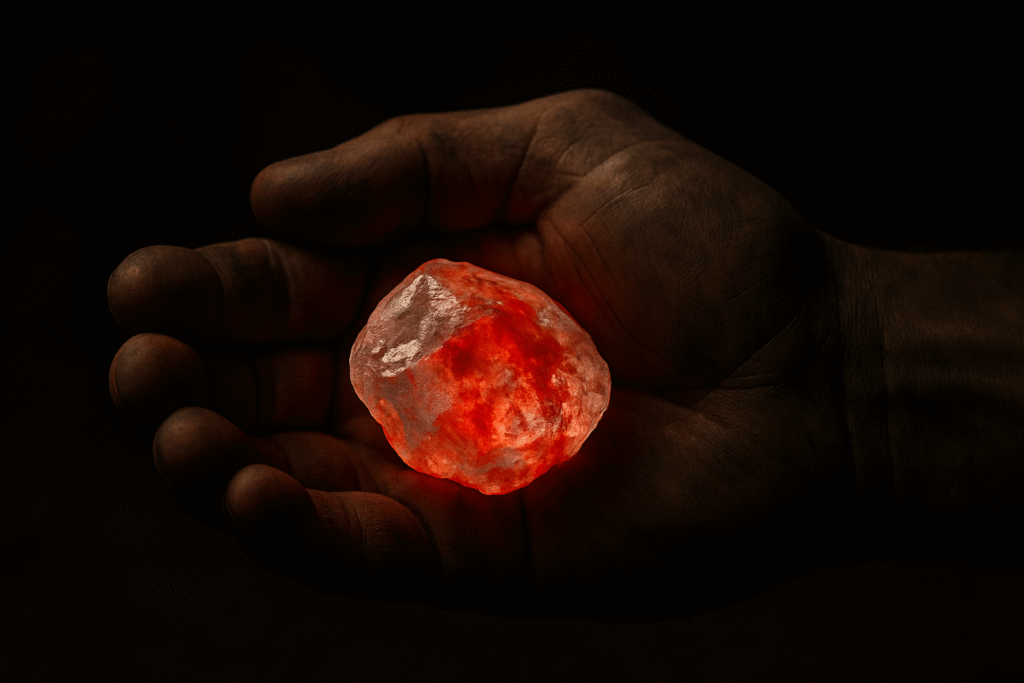
What Are Blood Diamonds?
The term blood diamonds refer to rough diamonds mined in regions controlled by rebel groups or armed forces that oppose legitimate governments. The profits from these diamonds are used to purchase weapons and sustain inhumane conflicts. As because they are extracted under immensely violent and exploitative situations, blood diamonds represent one of the darkest sides of the global ornament industry.
Conflict diamonds gained global attention in the late 1990s during brutal wars in countries such as Sierra Leone, Angola, Liberia, and the Democratic Republic of Congo (DRC). These diamonds, once mined, entered international markets and eventually found their way into luxury jewellery stores, far removed from the suffering they caused at their origin.
The Human Cost of Blood Diamonds
At the heart of the blood diamond trade lies unimaginable human suffering. Rebel forces in Sierra Leone and other nations forced civilians, including minors, to mine diamonds under intolerable conditions. Villages were destroyed, families torn apart, and countless lives lost. Victims were often subjected to violence, mutilation, or death if they opposed.
Children were not only forced to work in the mines but also recruited as child soldiers. The link between diamonds and human rights abuses became so strong that the global community could no longer ignore the issue. These gems, symbols of unmatched beauty, were financing warlords and prolonging humanitarian crisis.
Economic Impact
While diamond-rich nations should ideally benefit from their natural resources, conflict diamonds robbed many countries of solidity and progress. Instead of funding progressive schools, improved hospitals, and infrastructure for evolved daily life, diamond revenues often financed deadly weapons and horrifying wars. This “resource curse” left countries like Sierra Leone and Angola impoverished despite their mineral wealth.
Even today, regions scarred by the conflict diamond trade face weak governance, poor infrastructure, and mistrust in global diamond markets. Consumers have also become more alert, demanding assurances that the diamonds they purchase are ethically sourced.
The Kimberley Process: A Global Response
In 2003, the Kimberley Process Certification Scheme (KPCS) was launched as a joint government, industry, and civil society initiative. Its aim was constructive which is to prevent conflict diamonds from entering the mainstream market. Under the Kimberley Process, rough diamonds must be certified as conflict-free before they can be traded globally.
The initiative was an optimistic step in addressing the blood diamond crisis. By creating a paper trail and requiring governments to implement safeguards, the Kimberley Process aimed to cut off funding for rebel groups. Today, it includes more than 80 participating countries, representing the majority of the global diamond trade.
Criticisms of the Kimberley Process
Despite its enormous achievements, the Kimberley Process has faced significant criticism. Human rights organizations argue that it has limited scope, as it only addresses diamonds used to fund rebel movements against governments. It does not account for diamonds linked to human rights abuses by state governors or trading houses, exploiting workers.
For example, diamonds mined in Zimbabwe under conditions of violence and exploitation were still expected to be certified as conflict-free under the Kimberley Process. This loophole has raised concerns about the scheme’s ultimate credibility. Many activists argue that more brainy, more comprehensive measures are needed to ensure that diamonds traded are truly ethically sourced
Blood Diamonds in Popular Culture
The issue of blood diamonds entered mainstream consciousness through media and film. The 2006 Hollywood movie Blood Diamond, starring Leonardo DiCaprio, dramatized the horrors of the trade during Sierra Leone’s civil war. The film shed light on child labourers, smuggling networks, and the moral dilemmas felt by the diamond consumers.
This cultural impact helped spark conversations about responsible sourcing and consumer responsibility.
Toward Ethical Diamonds
As awareness grows, consumers are increasingly seeking transparency in the jewellery industry. Retailers now emphasize sourcing from conflict-free zones.
Ethical diamond certification programs, beyond the Kimberley Process, also help trace diamonds from mine to market. Initiatives like the Responsible Jewellery Council (RJC) and blockchain-based tracking systems are paving the way for a more accountable industry.
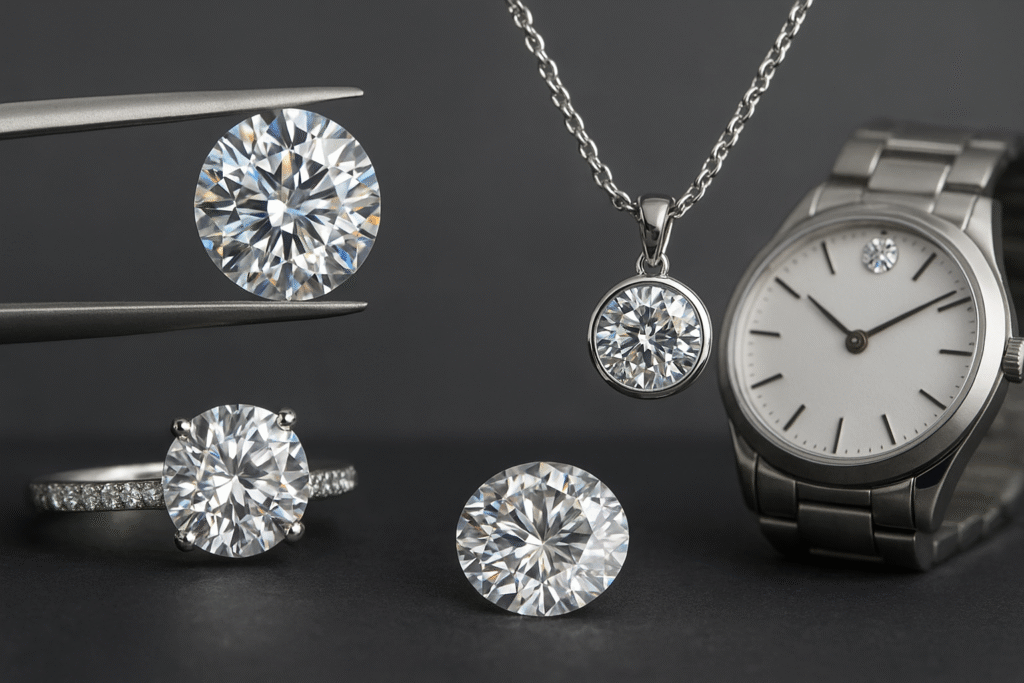
Beyond beauty: Various uses of diamonds
We need to be aware of the fact that diamonds are getting used in the medical field since long time back. Still increasing amount of research is continued to reveal the potential uses further, in health care. They are even considered in various medical instruments, prostheses in order to increase its durability and biocompatibility, imaging process etc. Diamonds offer advanced treatments due to their distinct optical, chemical properties.
Recently diamonds are effectively used in medical applications such as drug delivery, cardiovascular devices, micro electromechanical devices (MEMS)
and other electronic devices for their exceptional properties like high thermal conductivity high breakdown field, extreme hardness. Due to their exceptional hardness and thermal conductivity, are highly valued in industrial applications. In the construction and mining industries, diamonds are very commonly used indrill bits and saw blades to cut through hard materials. For example, diamond-tipped glass cutters are used to make clean cuts in glass, while diamond-tipped drill bits are used to drill through hard rocks in mining operations. Diamonds are also used in the manufacturing of high-performance bearings which are used in high-precision instruments and machines where low friction, high rigidity and long life are required. Diamond bearings are resistant to wear and tear, making them ideal.
In the electronics industry, diamonds are used as heat sinks. A heat sink is a component that absorbs and disperses heat from another object using thermal contact as diamonds have the high thermal conductivity, which makes them perfect for this application. They help to prevent electronic devices from overheating, thereby improving their performance and lifespan. They are also used in quantum computing and as detectors in particle physics.
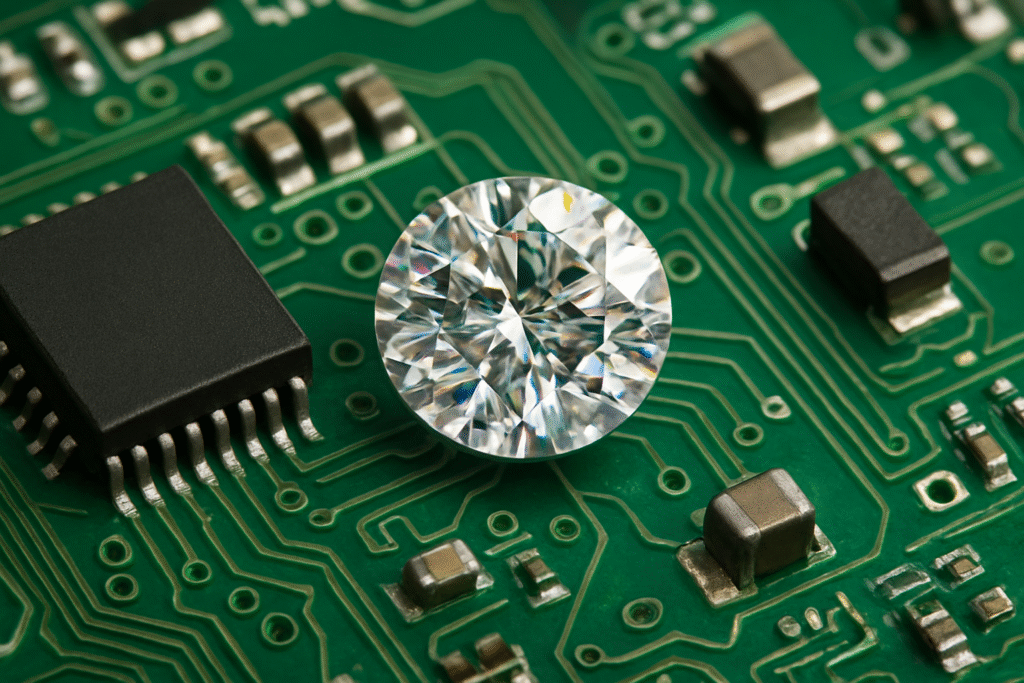
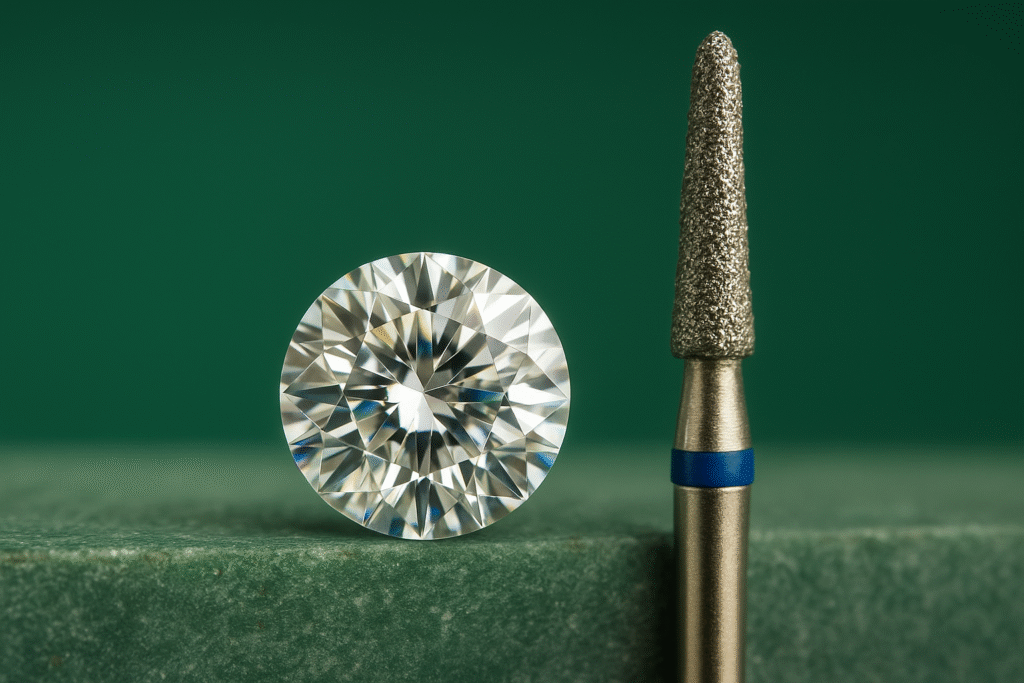
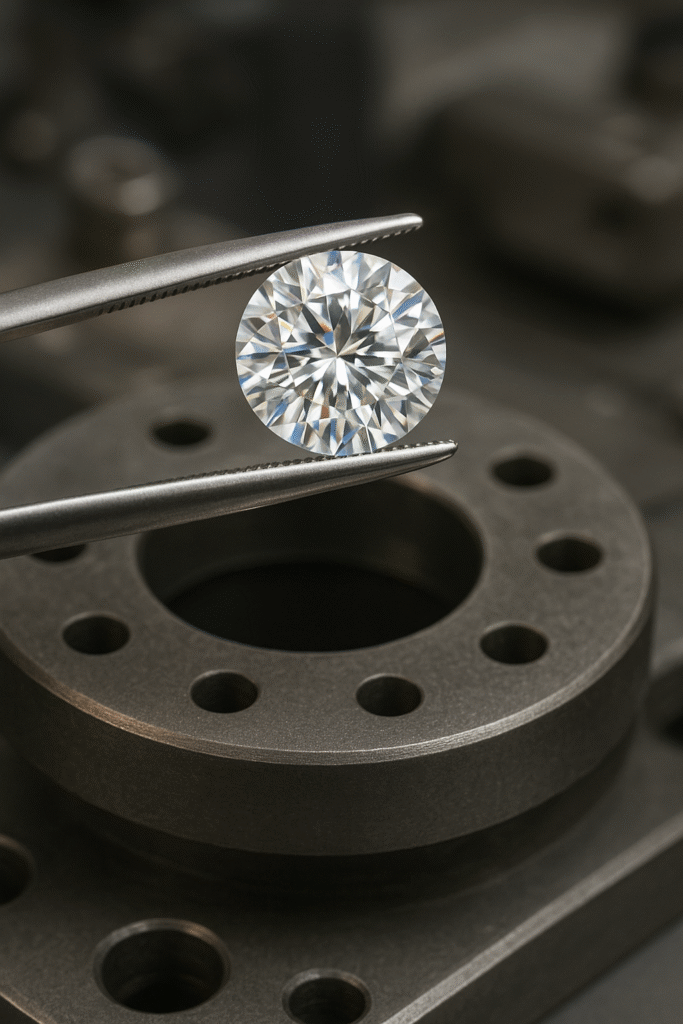
Here are the most important uses of diamonds besides jewellery:
1. Cutting, Drilling, and Grinding Tools
- Diamonds are the hardest natural material with a ranking 10 on the Mohs scale.
- They are widely used in diamond-tipped drill bits, saw blades, grinding wheels, and cutting tools to cut through hard materials like stone, concrete, ceramics, and metals.
- Industries such as mining, construction, and oil drilling rely heavily on diamonds.
2. Abrasives
- Diamond dust or powder is used as an abrasive to polish, smooth, or shape other hard materials.
- It’s common in lapidary (stone cutting/polishing), glass shaping, and fine grinding applications.
3. Heat Conductors in Electronics
- Diamonds have extremely high thermal conductivity and are excellent at dispersing heat.
- They are used in heat sinks for high-performance electronics, lasers, and semiconductors where overheating can be a problem.
4.Optical Uses
- Transparent diamonds can withstand high pressure and intense radiation.
- They are used in high-performance lenses, laser windows, infrared windows, and radiation detectors.
5. Scientific Research
- In labs, diamonds are used in diamond anvil cells to create very high-pressure environments.
- This helps scientists study materials under extreme conditions (like the pressure inside planets).
6. Medical Applications
- Diamond-coated surgical tools are sharper and longer-lasting.
- Nanodiamonds (tiny diamond particles) are being researched for drug delivery, cancer treatment, and imaging technologies.
7.Quantum and Electronics Applications
- Diamonds can be engineered with defects (like nitrogen-vacancy centres) that make them useful in quantum computing, magnetic sensing, and advanced data storage.
- They are also being tested in semiconductors for faster, more efficient electronics.
In summary diamonds are not just a beauty gemstone. It adds to its value by its various uses.
Positive aspects of diamonds: how to benefit
Diamonds are believed to be related to the planet Venus, and have powerful energies that can enhance different aspects of life, from emotional healing to boosting confidence. In order to attract success, find balance or elevate your inner strength, the astrological benefits of the gemstone are as sparkling as the gems themselves.
Astrological & Spiritual Significance (Venus Connection)
- Diamonds are closely associated with Venus (Shukra)—the planet of love, beauty, harmony, and creativity. Wearing a diamond is said to amplify these attributes when Venus is strong in one’s birth chart.
Enhancement of Love, Relationships, and Emotional Balance
- Believed to strengthen romantic relationships, foster harmony, and evoke positive emotions such as optimism and inner peace.
Confidence, Creativity, and Self-Esteem
- Diamonds are thought to boost self-confidence, artistic expression, and creativity—especially beneficial for those in creative or artistic professions.
Prosperity, Good Fortune, and Status
- Often considered symbols of wealth and success, diamonds are believed to attract financial abundance and elevate social status.
Mental Clarity and Stress Relief
- Wearing diamonds is said to calm the mind, enhance focus, reduce anxiety, and promote emotional equilibrium.
Health & Protection
- Traditional beliefs suggest protective properties—warding off negativity and potentially supporting physical well-being (digestive, reproductive systems, and immunity).
Birthstone & Cultural Symbolism
- Diamonds are the April birthstone, symbolizing purity, strength, and spiritual elevation.
- Part of the Navaratna (nine-gem) tradition, diamonds occupy a central astrological position in jewellery believed to bring balance and protection.
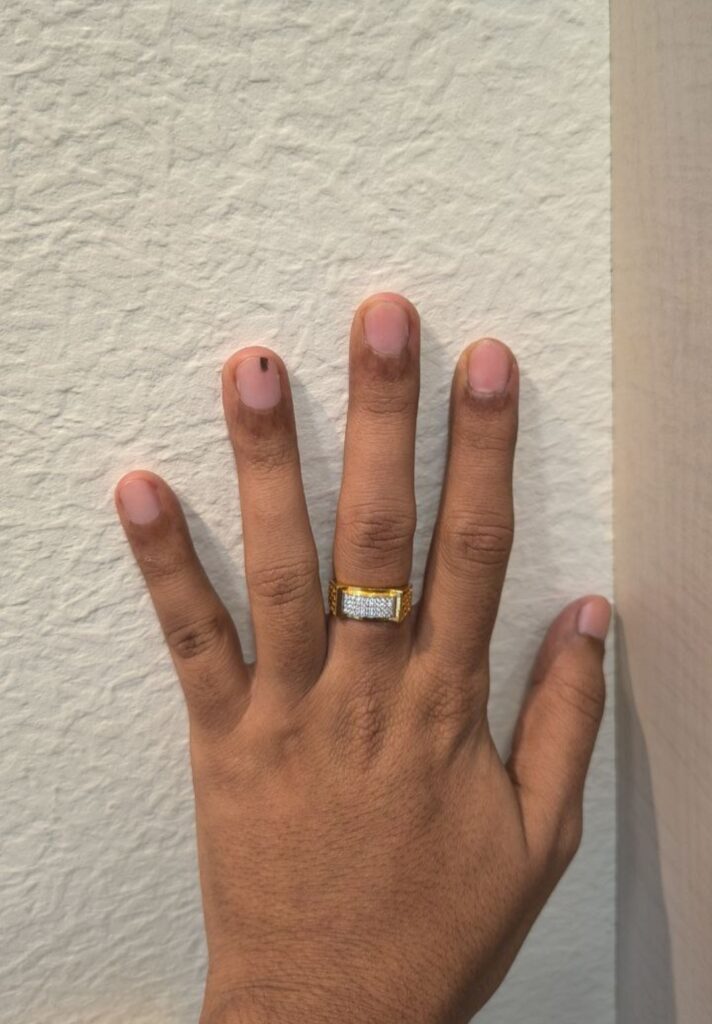
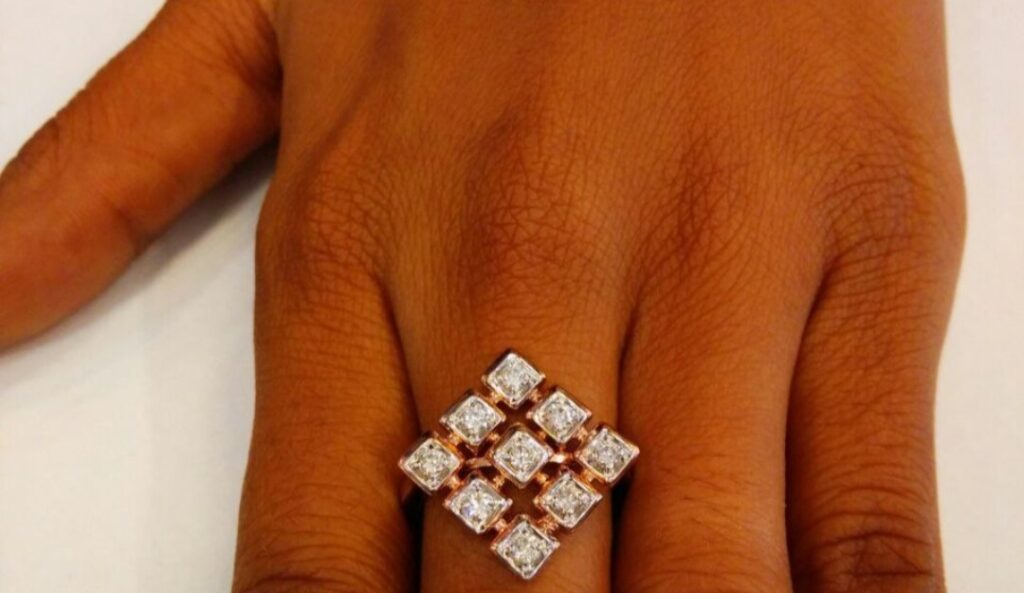
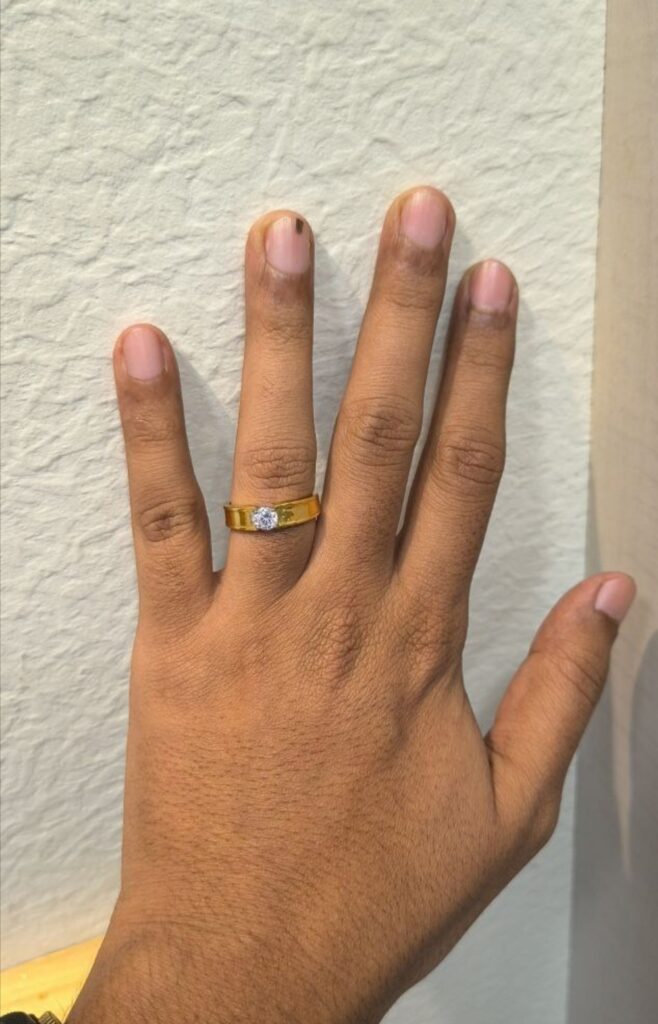
SUMMARY TABLE
| Benefit Category | Description |
| Astrological/Spiritual | Amplifies Venus-related traits like love, beauty, and harmony |
| Relationships | Enhances emotional stability, intimacy, positivity |
| Confidence & Creativity | Boosts self-esteem and creative flow |
| Prosperity & Status | Attracts wealth, success, and elevated societal recognition |
| Mental Clarity | Promotes focus, calm, and emotional clarity |
| Health & Protection | Believed to ward off negativity and support physical wellness |
| Birthstone/Cultural Relevance | April birthstone; vital to Navaratna jewellery traditions |
Conclusion
Wearing diamonds transcends mere aesthetics—it’s a tradition woven with meaning. From boosting confidence and creativity to fostering love, prosperity, and spiritual harmony, the perceived benefits are as multifaceted as the gemstone itself.

FAQ : Diamond history and benefits of wearing it
Q1. When were diamonds first discovered?
Diamonds were first discovered in India around the 4th century BC, making them one of the oldest known gemstones in history.
Q2. Why are diamonds called “diamonds”?
The word “diamond” comes from the Greek word adamas, meaning “invincible” or “unbreakable,” reflecting their hardness.
Q3. How were diamonds used in ancient civilizations?
In ancient India and Rome, diamonds were used as talismans for protection and believed to ward off evil spirits.
Q4. When did diamonds become popular in Europe?
Diamonds gained popularity in Europe during the Middle Ages and Renaissance, especially as symbols of wealth and power among royals.
Q5. What was the first famous diamond in history?
The Koh-i-Noor diamond, discovered in India, is among the most famous and oldest recorded diamonds.
Q6. Why were diamonds linked with royalty?
Because of their rarity, durability, and brilliance, diamonds became a status symbol of kings, queens, and nobles.
Q7. When did diamonds become engagement symbols?
The tradition began in 1477 when Archduke Maximilian of Austria gave Mary of Burgundy a diamond ring, sparking the custom of diamond engagement rings.
Q8. How did diamonds travel from India to Europe?
Diamonds reached Europe through trade routes, especially via Venice, which acted as a central hub for gemstone trade.
Q9. What are the astrological benefits of wearing a diamond?
Diamonds are associated with Venus (Shukra) in astrology, believed to enhance love, wealth, beauty, and artistic creativity.
Q10. Can diamonds improve relationships?
Yes, wearing a diamond is believed to promote harmony, trust, and emotional balance in relationships.
Q11. Do diamonds bring wealth and prosperity?
Traditionally, diamonds are considered symbols of abundance and prosperity, attracting financial stability.
Q12. How do diamonds affect mental well-being?
Diamonds are thought to bring clarity of thought, confidence, and emotional strength to the wearer.
Q13. Can diamonds boost career growth?
Yes, astrologers often suggest diamonds for individuals in creative, luxury, or artistic fields to enhance charm, charisma, and success.
Q14. Do diamonds have healing powers?
Some believe diamonds radiate positive energy, removing negativity and improving the wearer’s aura.
